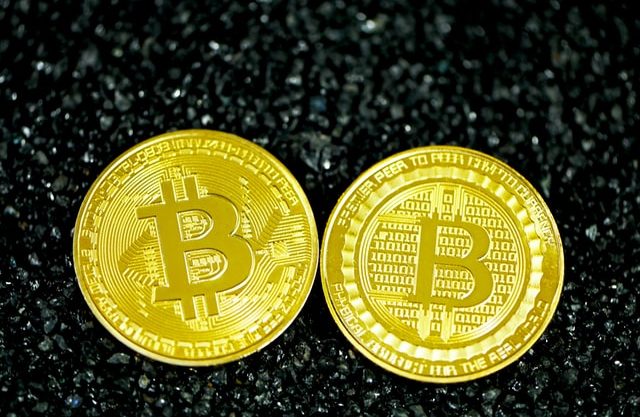Cryptocurrency. Altcoins. DeFi.
These are the buzzwords when one thinks of the future of finance. And there are, as always, 2 factions, one that thinks the collapse of banking is imminent. The other that feel banks are too big to collapse. But really, to understand which way the road will fork, it is important to take a step back and look at the history of banking.
A lesson in History
Banking and finance are as old as commerce. In fact, banking has always been about the facilitation of commercial activities. Even though that definition may have changed over the years, at its core, a bank exists to help smoothen the road for traders. Be it by providing extra funds at the right time, or a letter of credit when they wanted to set up a business in a new location, and so on.
Banks also stood for trust. If you had surplus capital and didn’t want the hassle of keeping it in your locker at home, depositing the money at a bank was one way to ease your mind. Not only would the money be kept safe, but you’d also earn a small interest on that too. And banks would use other people’s surplus cash to lend it out to people with a deficit of funds. At the same time, charging higher interest on the money, it lent.
So what stopped people from directly lending out to those in need? For one, there was no way to know the intentions of the borrowers for the individual lender, while banks had a sophisticated system to gauge whether the borrower would flee with the money or honor his debt.
The other was that the rich and wealthy were seldom seen in the company of the lesser fortunate. In fact, the joke in the era went like
The only place you would find a rich and poor man together, would be a bank
Slowly, as the needs of society evolved so did the nature of banking. Banks started processing complex transactions, as businesses started to grow. Customers started demanding faster settlements. And the ability to send money across banks. In real-time.
Banking in the internet era
With the proliferation of the internet and interconnected systems, banking systems couldn’t be far behind. Interconnecting the systems from one branch to another meant faster transaction speeds within the bank. It also helped that the central clearinghouses also linked up, reducing the lead time in interbank transfers. Check out how technology in banking is changing the lending game.
But that wasn’t all. Bigger issues were lurking around that needed attention—that of the huge unbanked population. The joke back then was, “Banks beg those who don’t need it to take a loan while turning away those who need it the most.” And that was the gap in the system that NBFCs sought to exploit.
By the early 2000s, mobiles started getting more and more powerful the world over. You could do a lot more than making a call. Complex computation was now just a click away. And with it, the surge in data collected about the people increased too.
This meant traditional ways of evaluating a potential borrower were quickly moving out of the window. And Fintechs were the first that cash in on that data bank. Acting with banks and NBFCs as an originator of loans have potentially missed the unexplored opportunity. These Fintechs helped solve the problem for the vast unbanked majority.
And then an interesting concept started to play out in the corners. A white paper by a mysterious Satoshi Nakamoto on the concept of decentralized currency started doing the rounds. As if it weren’t enough, a working concept called BitCoin started emerging.
Fast forward to a few decades; BitCoins are seen as the biggest store of value, more than even gold. Countries are at a loss of how they can “control” the circulation and use of BitCoins. In contrast, Financial institutions see the benefit of it. Major payments processors, Visa, and MasterCard, are looking to incorporate Bitcoins into their payment solutions.
So that brings us to what really lies in the road ahead for financial institutions?
Future of Finance has a Bumpy Ride Ahead
The biggest challenge ahead for cryptocurrency isn’t the regulatory roadblocks. But instead, the lack of understanding amongst the general population. Even hardcore bitcoin fans often confuse the means with the ends.
The first problem is with the concept of decentralized. When we say decentralized, we assume it means doing away with authorities. But lack of authorities results in a fragmented and disorderly world, where each man is out for themselves.
Instead, what decentralized in the financial world means that the final power to accept or reject a transaction does not rest in one’s hands. In the crypto world, it is distributed to multiple owners. But there is still authority. Those with more nodes in the system have a chance of controlling the system to an outcome more favorable to them. But chances of abuse are less because of the inherent disagreement that would ensue with the other nodes.
Now that we know we will still have rules comes the issue of who gets to set these rules? In a completely decentralized world, each man sets his own rules. When his rules contradict another, arbitration isn’t possible because finding common ground between them is difficult.
So this means in the crypto future, we will still have to look up to one authority for setting the rule and one for executing it. And the rest of us to follow through. But cryptocurrency is far from being an outlier.
Banking has definitely moved beyond the physical walls. Neo Banks are the future of finance. How?
When Crypto goes mainstream
Digital currencies, cryptocurrency especially, were once thought to be the arsenal of criminals and wild speculators. But not anymore, especially with legitimate business powerhouses, like Tesla and Square accepting bitcoins as a payment option. And we have a new class of investors called the HODLers!
And then there is CoinBase, the first-ever cryptocurrency exchange to go public on NASDAQ. This is believed to be a watershed moment for cryptocurrency backers, who believe this is the first step for them to upend the global financial systems. And for the naysayers who constantly ask the question, “Is crypto even a real thing?” CoinBase certainly proves that, doesn’t it.
At $250 a share, and a valuation of $65 Billions, it is certainly making a big bang entry. And at this size, it means that mainstream indices are going to pick up a portion of it for their portfolio. Meaning the regular investor, even if he wasn’t already in the crypto scene, will now (indirectly) have a taste of the pie.
“It blows a lot of the traditional tech and finance companies out of the water,” said Jalak Jobanputra, founder of Future\Perfect Ventures, an investor in the category. “It wasn’t that long ago that people just thought crypto wasn’t big enough.”
Just to put some perspective on the size of the listing, here are some stats. Nasdaq’s market cap is $26 billion, while ICE, the N.Y.S.E parent company, is valued at $67 billion. Goldman Sach’s, who by the way announced an extremely profitable first quarter, has a market value of $111 Billion.
Coinbase made a profit of $322 million last year and is rumored to have already made a profit of ~$800 Million in the first quarter this year!
Coinbase’s listing also opens the discussion around decentralized finance, using the underlying blockchain technology. However, so far, cryptos utility as a value of exchange has seen limited adoption, owing primarily to its price volatility. Many early proponents became wildly rich by “buying the dip” and holding onto it. Others lament over that million-dollar pizza they paid for via their crypto wallet.
However, before investing in CoinBase, one must be made aware of the risks. The company, though hugely profitable, saw its profits run up thanks to the increasing prices of digital assets, be it Ethereum, BitCoin, or NFTs. The company, in its prospects, warns of this dependence on crypto assets and volumes being traded.
The second risk is that of competitors entering the space and lowering their margins. Any profitable business eventually has to ward off attacks from other companies trying to replicate their model at a lower cost. And while there isn’t any imminent threat of that happening, there will be a compression of their fat margins in the longer term.
Wait! Finance has also got a Silver Lining in Future
Everything in the digital world occurs fast. Way faster than our traditional financial systems can keep up with. You don’t need to wait for the banking hours to transfer your assets to someone. It happens instantaneously. And unlike a centralized authority minting money, with DeFi, you have a lot more transparency in the system.
Then we have smart contracts, lines of codes with the expected results, and the deliverables are mentioned. Once the terms and conditions are successfully met, the program is executed without any intervention. However, this assumes a world where everyone knows to read and write these smart contracts and not leave any caveats. Because once executed, the outcome is irreversible.
So does it mean banking and financial institutions are going away? No. They may cease to exist in the form that they today. The infrastructure may be in for an overhaul, replacing it with a more nimble and efficient system. But as long as commerce exists, so will banking.
After all, change is the only constant. If that weren’t so, we’d still be wrapping our heads around complex calculations needed when bartering goods. In the end, what I can say for sure is that the future of finance will not only change the financial world but it will also change the way we manage our money. Do give it a thought!
-AMAZONPOLLY-ONLYWORDS-START-
Also, check out our most loved stories below

Why did Michelin, a tire company, decide to rate restaurants?
Is ‘Michelin Star’ by the same Michelin that sells tires, yes, it is! But Why? How a tire company evaluations became most coveted in the culinary industry?

Johnnie Walker – The legend that keeps walking!
Johnnie Walker is a 200 years old brand but it is still going strong with its marketing strategies and bold attitude to challenge the conventional norms.

Starbucks prices products on value not cost. Why?
In value-based pricing, products are price based on the perceived value instead of cost. Starbucks has mastered the art of value-based pricing. How?

Nike doesn’t sell shoes. It sells an idea!!
Nike has built one of the most powerful brands in the world through its benefit based marketing strategy. What is this strategy and how Nike has used it?

Domino’s is not a pizza delivery company. What is it then?
How one step towards digital transformation completely changed the brand perception of Domino’s from a pizza delivery company to a technology company?

BlackRock, the story of the world’s largest shadow bank
BlackRock has $7.9 trillion worth of Asset Under Management which is equal to 91 sovereign wealth funds managed. What made it unknown but a massive banker?

Why does Tesla’s Zero Dollar Budget Marketing Strategy work?
Touted as the most valuable car company in the world, Tesla firmly sticks to its zero dollar marketing. Then what is Tesla’s marketing strategy?

The Nokia Saga – Rise, Fall and Return
Nokia is a perfect case study of a business that once invincible but failed to maintain leadership as it did not innovate as fast as its competitors did!

Yahoo! The story of strategic mistakes
Yahoo’s story or case study is full of strategic mistakes. From wrong to missed acquisitions, wrong CEOs, the list is endless. No matter how great the product was!!

Apple – A Unique Take on Social Media Strategy
Apple’s social media strategy is extremely unusual. In this piece, we connect Apple’s unique and successful take on social media to its core values.
-AMAZONPOLLY-ONLYWORDS-END-

















